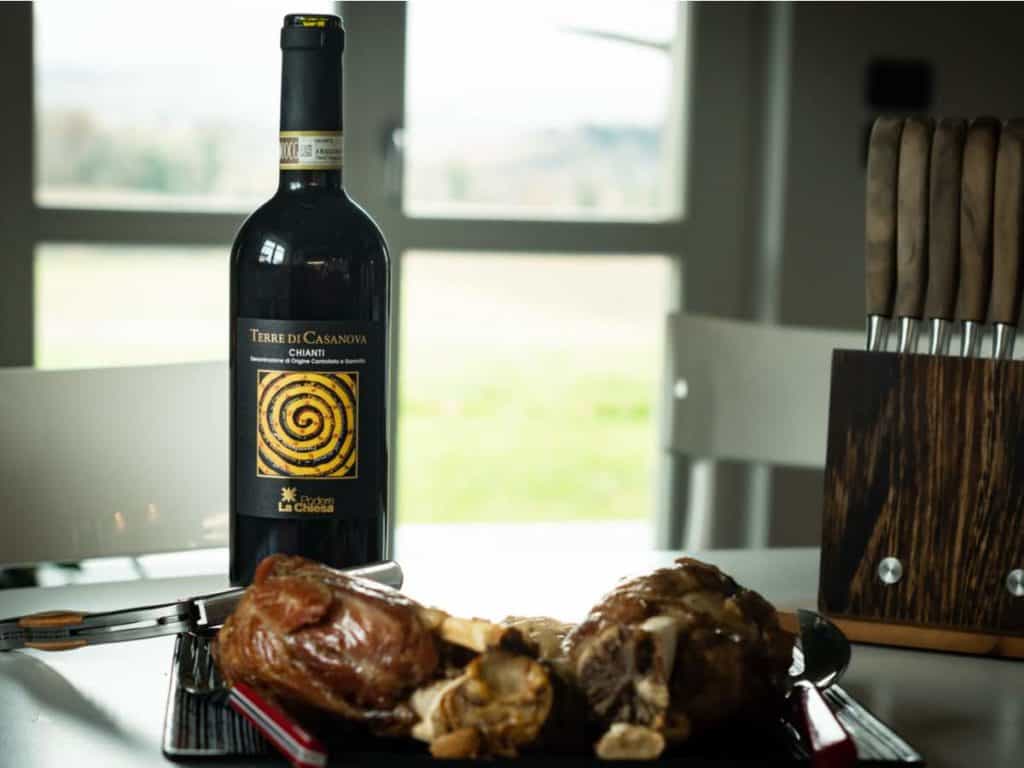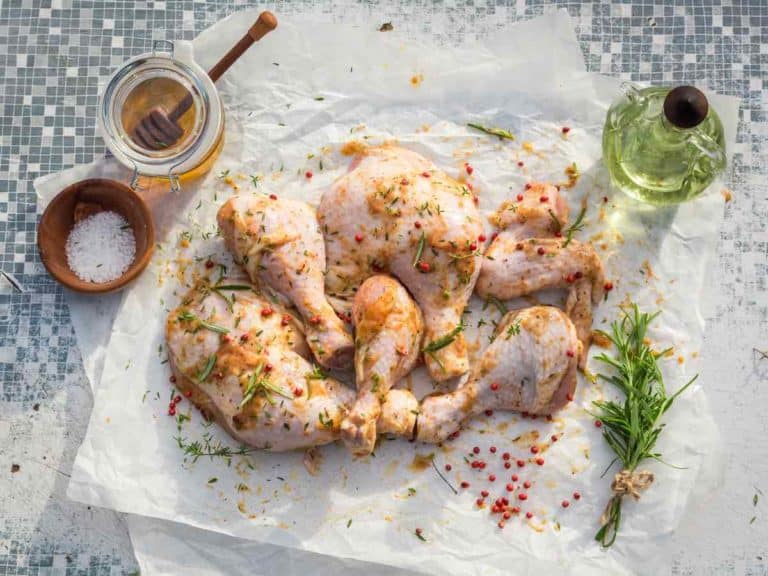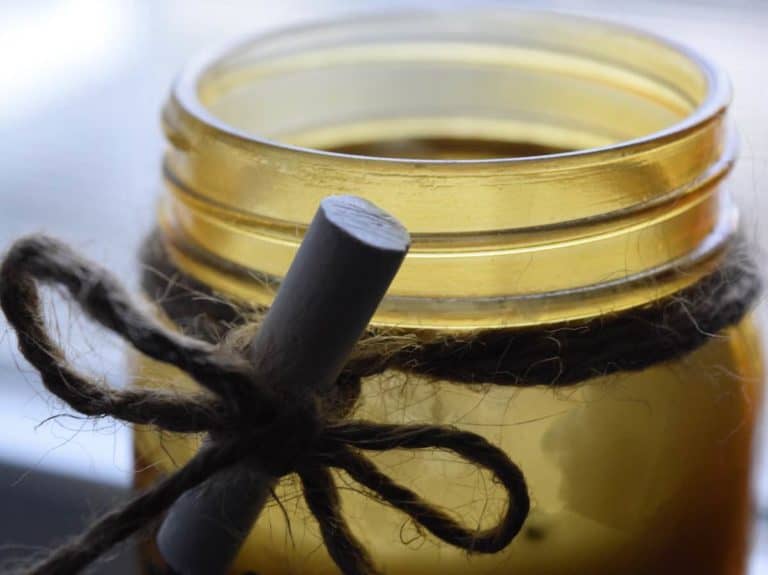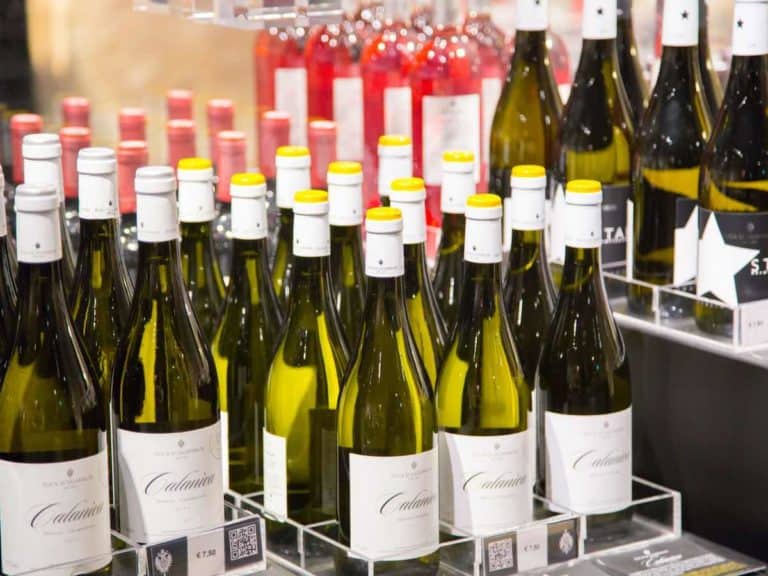Can You Cook With Chianti Wine?
A chilled glass of Chianti wine with a meal featuring tomatoes (think typical Tuscan recipes) goes together effortlessly. The pairing brings out the sweet, tart, and earthy notes in the wine, making for an unforgettable food experience.
So, naturally, one wonders, can you also use Chianti to cook? You most definitely can!
Chianti is one of the best red wines to cook with. However, some recipes benefit from adding this light and dry wine more than others. Read on to learn how you can cook with Chianti and add some killer recipes to your next dinner spread.

Basics Of Using Chianti In Cooking
Cooking with a red wine like Chianti is not limited to savory dishes. In fact, this light red works just as well in desserts. However, when a recipe calls for red wine, its body and structure play a vital role in selecting just the right one.
Related: What Food Goes With Chianti
Since Chianti is a light red wine, it is best suited for lighter recipes – something involving a tomato sauce (think pasta recipes) or vegetables rather than hearty stews that need a bolder, more full-bodied red wine.
That said, there is no shortage of stew and meat recipes that use Chianti, so it is a matter of preference. The basic rule is to use a light wine with a more delicate recipe, so the wine adds subtle yet rich flavor layering without overpowering other ingredients.
The quality of the Chianti wine used dictates which recipes benefit the most from its signature tartness. A medium-bodied Chianti with higher tannins can be used in more hearty dishes. However, it still won’t match the denser flavor of a Cabernet Sauvignon.
The best recipes for Chianti are pasta recipes with sauce or vegetables.
Chianti can be earthy, herbaceous, and spicy depending on the bottle while still containing subtle notes of berry fruitiness and a cherry-tart finish. Its well-balanced acidity, along with other flavor notes, makes it a great wine to add body and layers of flavor to tomato sauce for pasta and other quick pan sauces.
For recipes that ask for red wines in meat stews, you should use Cabernet or a full-bodied Merlot.
A suitable replacement for Chianti is a light Merlot, a Pinot Noir, or a Sangiovese wine. The Sangiovese wine made from the leading Sangiovese grape in Chianti (used at least 80% in the Classico variety) has the best flavor profile as it brings the same tartness and spice to the recipe.
Related Article: Best Red Wines for Cooking Spaghetti Sauce
Why Cook With Red Wine?
We know that Chianti, being a light-bodied wine, is better suited for light recipes that usually do not feature tough meats. But why should you cook with red wine anyway?
Look up recipes for a long-simmering beef cheek stew, a slow-cooked lamb roast, or a fresh tomato sauce pasta, and you’ll likely see red wine among the ingredients list. So, what do red wines bring to the table in terms of imparting flavor?

Essentially used for its acidity, red wine adds tons of flavor to every recipe. As the alcohol content in the wine evaporates during cooking, what’s left behind are complex flavors that add richness to any pasta or pan sauce Chianti wine is used in.
Not only that, but if your pasta sauce features meat, Chianti’s acidic properties help break down connective tissues, doubling as a tenderizing agent which ensures the meat is deliciously succulent.
As for red wines higher in tannins, they work excellent as an addition to marinates or braising liquids that make the meat fall off the bone (here’s looking at your short ribs!). They also help add loads of aromatic compounds to the final dish.
When used in desserts, red wines add a signature acidity that cuts the creamy components (like a dollop of whipped cream or a scoop of vanilla ice cream) to balance the sweet creations perfectly.
Related Article: Best Dry Red Wines for Cooking Beef
Can You Use White Wine Instead Of Chianti In a Recipe?
Imagine you’re all set to follow an excellent pasta recipe with a bold red sauce that calls for Chianti wine, but all you have on hand is white wine. So, would it be a wise decision to replace Chianti with white wine?
In short, no!
Even though both types of wine offer richness and acidity to foods, you can’t just replace them in any old recipe.
Even though both types of wines add acidity and moisture to dishes, their flavor profiles vary too much for them to be used interchangeably. And this rule does not only apply to Chianti; you should not use white wine instead of any other kind of red wine as well. White wines add notes of brighter, crisper flavors, whereas red wines are much bolder and tannic in comparison. In simple terms, when used instead of their white counterpart, red wines will overpower other ingredients. On the other hand, white wines used instead of red ones will fail to impart the complexity and boldness of flavor required in the recipe.
Therefore, you can not use white and red wine (Chianti or otherwise) in place of one another.

6 Delicious Recipes That Use Chianti Wine
Many of the recipes you come across often use the term red wine generically. Usually, all you have as instruction is to use a dry red wine, making it rather difficult to pick with dry red will go best with the said recipe.
We know that Chianti’s signature tartness and earthiness shine the most in a tomato-based sauce. Thus, if you are making a tomato pasta sauce, you can add Chianti to take the recipe to the next level, even if the recipe only calls for a dry red wine.
However, tomato sauce is not the only thing you can elevate using this delicious wine offering from Tuscany – there is so much more you can cook with Chain (Olive Garden does Chianti-braised short ribs). Here are six of our favorite recipes that sing with the addition of this light-bodied red.
- Meatballs and Sausage with Chianti Tomato Sauce: This recipe celebrates the classic Chianti pairing with tomatoes. The bright and acidic tomato sauce laden with herbs and spices balances the meatiness, making this a must-try if you have a bottle of Chianti at hand.
- Pappardelle in Chianti Sauce: Chianti is just as good for pan sauces as for tomato sauce. This simple recipe pairs Chianti with chopped rosemary, Parmigiano Reggiano, and black pepper, accentuating its earthiness and spice.
- Chianti Caramel Sauce With Steak and Mushrooms: You cannot go wrong with steak and mushroom skillet, especially when paired with a rich caramel Chianti sauce that accents the steak’s meatiness and balances the earthiness of the mushrooms.
- Chianti Marinated Beef Stew: As we said, Chianti isn’t always the red wine of choice for hearty stews, but if you still like to add this tart wine to a slow-cooked beef recipe, this one is for you! This marinated beef stew takes almost seven hours to serve, but boy, is it worth it. After being marinated in Chianti, the tender meat sings, whose subtle flavor does not take over the meat and vegetables.
- Chianti Poached Apples: Dare we say this is the perfect fall dessert. Apple poached in Chianti, along with sugar and cinnamon, brings just the needed high notes of tanginess required to offset the sweetness of the fruit. While this recipe is delicious on its own (and so easy to make), add a dollop of ice cream for added richness.
- Chianti Affogato: This affogato recipe is like a big hug. With orange zest, cinnamon, basil sprigs, and black peppercorn steep, this Chianti concoction cuts right through the gelato or ice cream.
Other Red Wines You Can Cook With
While Chianti is a great red wine to cook with, it’s not your only option. It is often not the best option when the recipe calls for a more full-bodied red to add bolder flavor. In such a case, you can try other red wines. Here’s a little cheat sheet for you to pick the right kind of red wine on your next cooking adventure.
- Cabernet Sauvignon or Pinot Noir works best with beef and lamb, especially when cooking up a stew.
- Merlot pairs well with pork, duck, and chicken.
- Seafood is much more delicate, so the versatile Pinot Noir works great.
- Chianti or a light Merlot should be on your shopping list for sauces and vegetables.
Let’s look at these red wines in detail:
Red Wine Cooking Tips For Best Results
When cooking with Chianti or other red wines, there are a few things to consider. Following the below-mentioned tips ensures you use the correct variety of red wine the right way.
Steer Clear of Cooking Wine
Cooking wine (yes, the one found in the vinegar aisle) should be ditched when you’re shipping up your favorite recipes – which is kind of ironic considering the name. The reason to rely on regular wine for acidity and overall flavor complexity is that cooking wine contains preservatives and salt, changing how your recipe tastes.
Moreover, the alcohol in regular wine will evaporate once your pan hits the heat anyway, so using alcohol-free cooking wine does not make much sense. Even if you have run out of Chianti, we don’t advise swapping in cooking wine. A better idea would be to substitute in another light-bodied red.
Ditch The Old Wine
Chianti is good to use three to five days after it’s opened if appropriately stored (same goes for other wines). Any longer than this and the wine will taste flat due to oxidation. Therefore, it will not add the flavor and acidity you expect. It’s always better to open a new bottle of wine to use for cooking.
If you have to, take a little sip from the opened bottle to see if it still tastes good enough to use. As for what wine to use, a simple rule to follow is to go for the variety you enjoy drinking. There is a high chance that if you like to drink a particular wine, you will enjoy its flavor when it is cooked down as well.

Extra Intense Reds May Make Food Taste Bitter
If a recipe asks for a bolder, more full-bodied wine than Chianti, it’s best not to use intense varieties like Zinfandel, which are at a higher risk of turning bitter once cooked down. Such intense wines may be forgiving when preparing a leg of lamb but often make other less hearty dishes chalky.
Low Heat Is Your Friend
Cook red wine on lower heat to prevent sour-tasting food. You will find that wine cooked on low heat and high heat has completely different taste notes, with the former much more enjoyable.
Don’t Spend Too Much On Wine You’ll Use To Cook
We are not advising you to cook with low-quality wine. However, use the right kind of red wine with the right style of food, and you should be good with moderately-priced varieties. Keep high-quality vino to sip on as you enjoy your favorite recipes. Using expensive, which will eventually cook down, is a waste.
Wine Substitutes In Cooking
What if you do not have wine to cook with and stepping out to buy a bottle is not on the cards? Luckily, there are several alternatives you can use. However, keep in mind that the result will be a watered-down version of the original recipe. Nonetheless, they work well enough for a dinner emergency.
- Red or White Wine Vinegar: Substitutes red wine vinegar for red wine and white wine vinegar for white wine. The vinegar adds acidity, so it is a suitable replacement.
- Stock: Stock works as a good substitute for wine as it adds flavor layers to the recipe and brings in the aroma. For white wine, do not use beef stock as a replacement; instead, stick with chicken and vegetable stock. For red wine, any of the stocks would work. You can choose according to the recipe.
- Juice: Richer red fruit juices (grape and cranberry) are suitable substitutes for red wines. Apple or lemon juice can be used in place of white wine.
Read Also: Best Red Wines for Cooking Chicken
Bottom Line
Chianti is one of the best red wines to use in cooking. However, this light-bodied wine is a better option for lighter recipes like pasta and pan sauces or ones that feature vegetables.
Even though they can be made with Chianti, heartier dishes benefit more from bolder tasting wines like Cabernet. The subtle notes of fruitiness, tartness, and earthiness of Chianti are better appreciated in cleaner recipes that show off its flavor balance.
Read Next: How Long Does Chianti Last After Opening?





